Last updated on April 1st, 2024 at 05:47 am
There are number of programming languages available to create mobile apps with various pros and cons. You can use these languages in Windows, iOS, and Android. Developers who have a good understanding about CSS, JavaScript, and HTML can do their jobs well and make strong mobile apps. JavaScript frameworks are used in developing an Android app for mobiles. This post will evaluate the best JavaScript frameworks for developing mobile app solutions.
What is the JavaScript Framework?
JavaScript frameworks are a set of libraries containing code written in JavaScript that makes life a lot easier for software developers.
Front-end programmers often use JavaScript scripting to create dynamic content for websites and web-based apps.
While JS has acted as the base, JS Frameworks have been the source of its basic elements.
This framework takes into account the most efficient and cost-effective methods of developing the basic code. It may create websites, web pages, and web-based apps.
As opposed to creating intricate, protracted, and messy programs, libraries are seen as somewhat time-wasting. You can easily use it.
The best JavaScript Framework offers the foundation that roots program codes by controlling them.
Pros of JavaScript Frameworks for Mobile App Development
The pros of the best JavaScript Framework are as follows:
- Ingrained HTML Templating: The production of web pages and websites also benefits from HTML. Thus, HTML tagging aids you in focusing on amply designed and legally logical content.
- Time and Money Savings: Because the codes are already set up, you can save time and money by not having to write long, boring programs and codes.
- Optimized Site Performance: Using a virtualized DOM to keep web pages and deployment models consistent helps sites run better.
- Variety: Each framework develops around a specific component. Thus, each has an outstanding feature. You can select the best option from several options. The framework depends on your knowledge and living environment.
Therefore, with JavaScript knowledge, you can develop the best mobile apps using HTML and JavaScript mobile frameworks. Some JavaScript mobile libraries make your ideas’ apps much more straightforward.
Best JavaScript Framework For Mobile App Development
Here, we have discussed some best JavaScript Framework For App Development. It will help you to do things with less effort.
Mobile Angular UI


A well-known JavaScript for application development is Mobile Angular UI. It is one of the most well-known open-source front-end programming languages, enabling all the necessary mobile components for app development.
It considers a broader group of processes and features like overlays, navbars, sidebars, switches, and scrollable areas. Mobile Angular UI is used for emerging dynamic single-page apps (SPAs).
Some leading mobile Angular UI platforms are Freelancer, LinkedIn, PayPal, and Lego.
Features of Mobile Angular UI
The wide range of features in mobile Angular UI helps you create better apps. These includes:
- The mobile Angular UI JavaScript framework for web design considers two-way data-binding experiences.
- It lets data be transferred automatically between model and view components, making it easier for developers to work on new programs.
- HTML templates related to the platform are evaluated directly in the DOM.
- It considers vital directions.
- The framework has easy-to-use mobile parts for accordions, navbars, dropdowns, scrollable sections, modals, sidebars, and more.
- Integrated dependency injection provides the foundation for making it easier to make apps and test them.
Pros of Mobile Angular UI
- Mobile Angular UI not only gives you all the mobile components you need but also loads pages quickly.
- Because Angular uses browsers to build the pages, it doesn’t put extra strain on the server.
Cons of Mobile Angular UI
- Compared to other JavaScript, debugging mobile Angular UI apps might be a bit more complicated.
- The framework requires server-side approval and validation to create a secure app.
Vue.JS
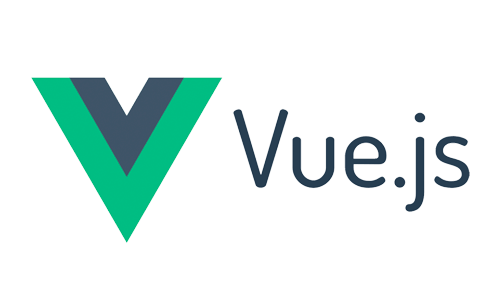

Another best JavaScript framework for mobile apps is Vue. JS.
It has a high degree of decoupling, which allows the creation of dynamic user interfaces by developers. It has a reactive component system built in.
Vue.JS is mainly a mobile framework for HTML and JavaScript, but we can also use JSX, CSS, and TypeScript.
It contains a unique command line that enables developers to launch a new project using the basic template. Xiaomi, Gitlab, and Alibaba are a few of the big Vue.JS customers.
Features of Vue.JS
The features listed below make Vue.JS effective:
- It is a best JavaScript Framework as it allows you to create mobile apps with sound displays.
- Vue.JS uses a virtual DOM, which makes it much more flexible for development. It is also faster and cheaper.
- The framework has data-binding experiences, and the binding directive is called v-bind. It makes it possible to rapidly alter styles, apply classes, and operate HTML properties.
- One of the main pros of the Vue.JS framework is the ease with which developers may build, add details, and reuse those in HTML.
- It gives event management, templates, animation, transitions, CLI, routing, and planned properties their own experiences.
Pros of Vue.JS
- JS is a flexible and easy-to-use JavaScript mobile framework that has a lot of benefits and is becoming more popular as a result.
- It is easier to use, integrate, customize, and optimize, and it is smaller. It also has good certification and great support.
Cons of Vue.JS
- Despite its growing reputation, Vue.JS has certain drawbacks as well.
- For example, the platform’s stability has been called into question, which makes it a less-than-optional choice for more extensive projects where problems could lead to significant financial losses.
- JS lacks a few crucial plugins since it is now in development.
React.JS


One of the best front end framework for emerging mobile apps is React.
Facebook first introduced React in 2003.
It has a large community, Facebook assistance, saturated contexts, reusable elements, and increased output.
React is one of the finest and most effective frameworks for creating front-end apps.
Since it needs the least amount of code, it is fast, responsive, easy to use, and scalable.
If you want to design and build an app that works on more than one platform, React might be a better choice.
Features of React.JS
React.JS is top JS framework because it has many valuable features. These qualities contain the following
- One of its most important components is JS DOM, which accelerates, improves, and makes app development more flexible.
- JS also forces JSX, which makes creating code and developing an app step-by-step easier and more convenient.
- Due to the one-way React.JS data flow process, developers have better control over the development process since no element may be updated without a call-back tool.
- The React Native rendering method uses native components instead of web technologies in JS.
- User interface design and element design can be collaboratively carried out using JS.
Pros of React.JS
Because it has so many great features, React.JS is without a doubt one of the best JavaScript Framework out there.
Due to its competence and speed, it is lightweight and ideal for large-scale projects.
React.JS has a custom-made modular framework that emphasizes offering outstanding software quality.
It is well known among developers worldwide for its complete toolkit, reusable parts, company supports, SEO-friendly layout, and easy-to-use approach.
Cons of React.JS
React.JS, like most other JavaScript web development frameworks, isn’t flawless.
Its rapid growth may sometimes be a drawback.
The complexity of learning curve depends on the developer’s experience, knowledge, and background solution.
Because of its constantly evolving technologies, the framework lacks adequate certification experience.
React.JS solely handles an app’s UI layer, requiring other technologies to complete a project.
Node.JS
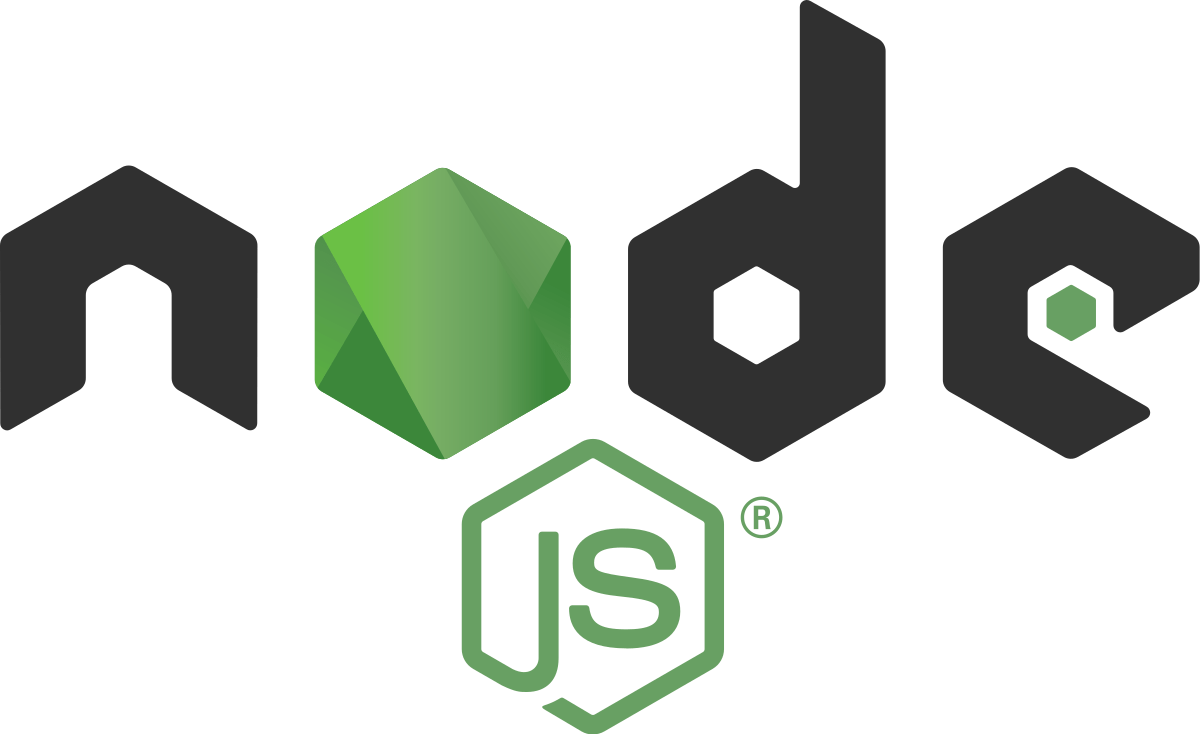

Node JS is another strong JavaScript framework that lets you to develop a server-side element using JavaScript.
The best thing about Node JS is that you can now make a web app from start to end using only JavaScript.
It’s also free and works on multiple systems such as Windows, Linux, Unix, and Mac OS X.
Node.JS was first released in 2009 and is built on Google Chrome’s V8 JavaScript library.
Node.JS’s robust runtime settings and extensive library of JavaScript plugins make it possible to construct apps more quickly. Its number of customers is overgrowing, and well-known sites like Netflix, Walmart, and Uber are among them.
Features of the Node.js Framework
Node.JS is an extensively favored framework because of its easy-going features. These features consist of the following:
- Because of its V8 JavaScript engine, Node.JS is known for its remarkable speed while running programs.
- The event-driven aspect considers Async.js or non-blocking APIs.
- JS has a single-threaded app that makes event looping possible.
- JS is very scalable.
- Because Node.JS lacks data buffering, the app offers data in fragments.
- Functional under the MIT license is Node.js.
Pros of Node.JS
- JS helps in handling multitasking better than most others; hence, this is one of its main pros.
- Google Chrome’s V8 benchmark package made it possible to make improvements to handle multiple tasks at once.
- The framework gives you better speed, simple elasticity and adaptability, community support, and a solution that works with your budget.
- It also supports the creation of cross-platform apps, speeds up app response time, and reduces loading time and time to market.
Cons of Node.JS
- There are some drawbacks to Node.JS, and they may be pretty tricky.
- For instance, the framework struggles to complete demanding estimation jobs and lowers performance.
- This JavaScript mobile framework also has problems like not having library support and APIs that aren’t stable.
PhoneGap


PhoneGap is an Open Source platform that makes it easy to make hybrid apps. And, it runs on most operating systems, such as iOS, Android, Windows Phone, and Blackberry.
The framework makes it possible to make apps with HTML, CSS, and JavaScript without knowing how to code for mobile devices.
PhoneGap produces apps for all functional systems, including Android, iOS, BlackBerry, and Windows.
It is an HTML and JavaScript based mobile framework.
Features of the PhoneGap Framework
- One of PhoneGap’s unique features is the usage of different languages, such as HTML, JavaScript, and CSS.
- PhoneGap also has the advantage that native plugins can be used to expand the platform’s capabilities.
- One of PhoneGap’s key features is the framework’s simple elasticity.
- It offers a solid back-end design built for high-speed implementation while reducing development efforts.
Pros of the PhoneGap Framework
- One of the best things about PhoneGap is that it lets you make one app that works on multiple mobile operating systems.
- The framework makes sure that delivery is uniform across all platforms.
- The robust back-end and user-responsive plugins considerably increase its numerous pros.
Cons of the PhoneGap Framework
- Even if PhoneGap has certain drawbacks, there aren’t many of them.
- The framework does not allow hook-added plugins, which is a very important point.
- PhoneGap doesn’t focus on the JavaScript mobile gaming framework.
- It does not create apps that require a lot of hardware.
- PhoneGap requires a Mac to create iOS apps.
jQuery Mobile


jQuery mobile framework follows the idea of “write less, do more.” It is platform-liberated and well-matched with a variety of browsers. Not only does it make HTML coding simpler, but it also intensely simplifies processes, including event handling, Ajax, and animation.
JQuery might be a fantastic option if you want to design a new app that is visually appealing and engaging. Some well-known mobile app development company utilizes jQuery, such as Twitter, Uber, AngelList, Hootsuite, and Kickstarter.
Features of jQuery Mobile
JQuery is straightforward to understand and loaded with features that increase its success. The following are a few of the many features:
- The fact that jQuery has a defined way through which you can perform any action you choose makes the framework simple to use.
- It features a pre-set CSS operation strategy and is compact and light.
- HTM alteration is also simple owing to functions like simple DOM element change.
- A vital component of the HTML/JavaScript mobile framework is that it supports many browsers.
- Another important part of jQuery is that it works with AJAX, which lets programmers make responsive apps.
- The framework’s built-in animation is a fantastic feature that makes it simple to create unique animations.
Pros of jQuery Mobile
One of the best things about using jQuery as your JavaScript mobile framework is that it works with both new and old functional systems.
One of its benefits is that it works well in all browsers. Its easy event handling, DOM-specific tools, AJAX integration, and ability to produce a dynamic response are pluses.
Cons of jQuery Mobile
The fact that jQuery requires the import of a large library could be one of its most serious flaws, slowing its growth.
The DOM APIs of jQuery are out of date, and libraries in JavaScript make them more interesting to learn.
Sencha Touch


Sencha Touch is a well-known HTML/JavaScript framework for making mobile apps. It is based on the MVC model.
The JavaScript framework provides the best programming experience. It also focuses on how to make dynamic mobile apps for different types of systems such as Android, BlackBerry, iOS, and Windows.
Using Sencha Touch, developers can create apps using HTML, JavaScript, and CSS.
The framework comes with creative elements and is jam-packed with far-fetched features and tools.
Features of the Sencha Touch
The following reasons make the Sencha Touch HTML/JavaScript mobile platform stand out:
- It has elegant features like carousels, menus, lists, toolbars, and forms.
- The Sencha Touch platform has themes that seem native.
- This mobile JavaScript model provides suitable code between current and previous iterations.
- Including features improves the user experience, including flexible layouts, simple scrolling, and animations.
- The framework’s easy-going layout manager is an added feature.
Pros of Sencha Touch
Sencha Touch is a standard JavaScript framework that has several pros for programmers.
For example, the dynamic interface enables quick and easy direction-finding.
It is also a cost-effective choice for mobile frameworks that work on different platforms.
Cons of Sencha Touch
Sencha Touch also has certain drawbacks:
- The apps made on this JavaScript mobile platform can’t use the device’s unique features.
- These are cameras or contacts that transmit push notifications or support intensive graphics.
- Sencha Touch is a poor JavaScript mobile gaming framework.
Meteor
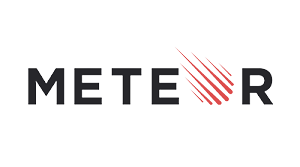

Meteor is another powerful and cutting-edge JavaScript mobile app framework.
It is a full-stack JavaScript library for making real-time apps that use Node.JS’s features.
It lets you make dynamic mobile apps because it comes with all the basic features and tools most modern developers want.
Meteor has excellent certification and enough learning resources, so it has everything a developer could need to create high-caliber mobile apps.
Features of Meteors
Meteor is brimming with eye-catching features that developers create. The most notable features of Meteor are that it is a complete solution with cutting-edge cohesive experiences like mechanized CSS, responsive layouts, and more.
- The framework also has a possible solution for creating real-time apps from scratch.
- Meteor has front-end and back-end parts, such as frameworks, folders, and other resources.
- Its isomorphic coding experience is one of the framework’s key features.
- Meteor’s added features are considered via the built-in custom package management.
Pros of Meteor
- Beyond its robustness and complete stack of features, Meteor offers several pros. It is easy to learn, very reactive, and user-centred.
- Meteor also focuses on reusing code and has a powerful command line interface (CLI) that gives its context more power.
Cons of Meteorology
- Meteor has drawbacks of its own, despite the pros it offers.
- For example, there is not a lot of CPU volume in the JavaScript mobile framework.
- Meteor is also not as good at installing apps on a large scale as other companies because it hasn’t been around as long.
NativeScript
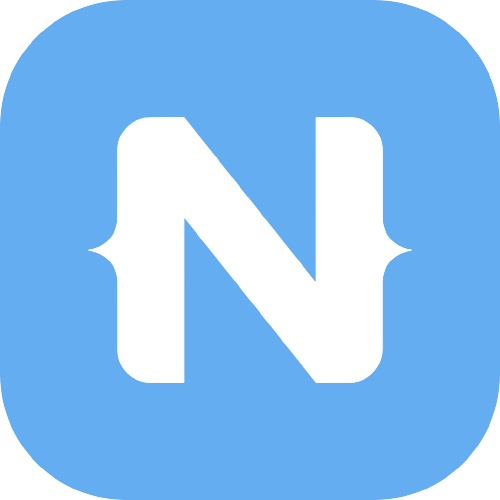

NativeScript is another open-source framework that lets developers to make mobile apps for both iOS and Android.
JavaScript is the primary scripting language.
NativeScript 6.0 is the most current version of Native Script. It is loaded with cutting-edge innovations designed to improve user experiences and performance.
Features of NativeScript
The following are features of NativeScript 6.0:
- One of the most important parts of this updated JavaScript mobile framework is the way it compresses files.
- It enables programmers to package source code more tightly.
- The latest update lets developers work quickly, and the latest release works with Android X.
- The TabView is one of the most useful parts of the latest version because it gives developers more options and flexibility.
Pros of NativeScript
- If you’re seeking a complex framework that runs fast, NativeScript is quite helpful.
- It offers the development of native programs and uses native components, enhancing overall competence.
Cons of NativeScript
- NativeScript has several key drawbacks, one of which is the variation that comes with frequent changes.
- The certification is lacking in contrast to other cross-platform JavaScript mobile platforms.
Aurelia


Aurelia, a front-end JavaScript framework, can build desktop, mobile, and browser apps.
It follows the web platform’s needs and prioritizes stability over alignment.
There is more than one framework in Aurelia. Instead, it divides into modules that focus on specific features.
Either ECMAScript or TypeScript is used to write each module. They can use such components in JavaScript apps, just like Node.js apps.
Features of Aurelia
You can go beyond the cons of native apps by offering clients engaging, rich practices thanks to Aurelia. Here, we have discussed some features of Aurelia:
- It considers multi-tool capability, plugin collection, and dynamic UI alignment.
- It focuses on the ability to make new HTML components and add custom properties to HTML elements that are already there.
- Components are versatile and may be removed or adjusted to meet your needs.
Pros of Aurelia
- Constructive norms make it simple.
- Modern development
- JavaScript is used instead of a framework, which makes sense
- It is feasible to increase
- With other elements, it works well
- You can use it easily
- Relying Injection
Cons of Aurelia
- Aurelia is easy-going and focused on the modern web without excessive abstractions.
Ionic
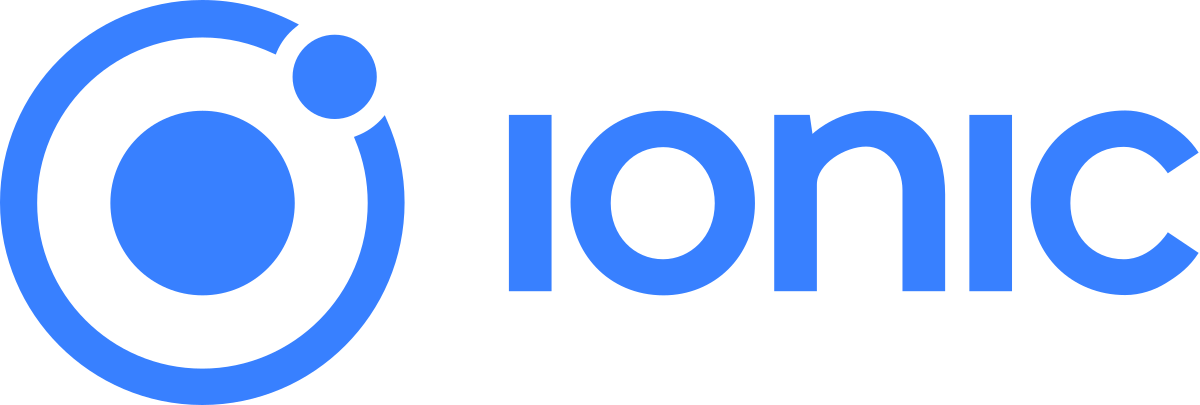

The best thing you can do with this open-source framework is make hybrid mobile apps. This framework helps you cut down on both costs and development time. It uses just one piece of code across multiple platforms and has a number of Cordova plugins.
This Ionic framework lets you make your own themes, which makes it easy to fit for the app you want to develop.
Features of using Ionic
- It lets you make your own parts that can be used over and over again in web apps and web pages.
- Ionics’ V4 works as a separate library of web elements. Most front-end frameworks take Vue.js into account, and React.js lets us use it.
- In the Ionic framework, you can run software on different platforms like desktop, web, Android, and native iOS using the same code base.
- There are many different kinds of themes for Ionic apps, such as typography, pre-designed elements, base themes, and interaction paradigms.
Pros of using Ionic
- Compared to native Android or iOS apps, these apps are easy to make and take less time to get to market.
- It can also be built mostly in the browser, except for features that only work on the phone and need to be tested on the phone itself.
- You can also use this framework to make apps for both Android and iOS at the same time, though there are some limitations, like the need for platform support for plugins and styling.
- If you started with HTML, Angular, CSS, and JavaScript instead of Swift, Java, or Objective-C, you would be better off.
- UI elements like modals, segments, buttons, cards, input, row/column grids, lists, and toggles are easy to use and available.
- Different plugins let the phone use features like fingerprint scanners, cameras, geolocation, push notifications, NFC, sending analytics to Firebase, and deep links.
Cons of using Ionic
- Native plugins don’t work well together and aren’t stable. But Iconic needs to be fixed so that it has more features out of the box.
- Because error messages aren’t always clear, debugging an app made with Ionic can be hard and take a long time.
- Builds can fail for no reason at all.
Conclusion
Your next project’s platform selection will be much simpler now that you know the best JavaScript mobile platforms. However, it’s crucial to remember that picking a framework based on its features isn’t always the best option.
So, keep an eye on how you can use the framework and how fast it is while ensuring it meets your needs.
FAQs
Q1. What is a JavaScript framework?
Programmers may use JavaScript frameworks to handle strategies for specific functions. As a result, JavaScript frameworks are highly flexible and agile.
Q2. Which JavaScript frameworks are the most renowned?
The well-explained frameworks listed above, such as React, Angular, Vue, Node, Sencha Touch, etc., are among the top JS frameworks. The development of websites and web-based apps uses such frameworks.
Q3. What are the best JavaScript frameworks?
React, Vue, and Angular are the best JS frameworks because they use quick stacking techniques well and have a user interface that is always fluid.
Q4: Which JavaScript platform is the easiest to learn?
Vue.JS is the easiest JS front-end platform to use for everything that is now available. It lets developers make SPAs without worrying about how the changes will affect the website.



Naveen Khanna is the CEO of eBizneeds, a company renowned for its bespoke web and mobile app development. By delivering high-end modern solutions all over the globe, Naveen takes pleasure in sharing his rich experiences and views on emerging technological trends. He has worked in many domains, from education, entertainment, banking, manufacturing, healthcare, and real estate, sharing rich experience in delivering innovative solutions.




